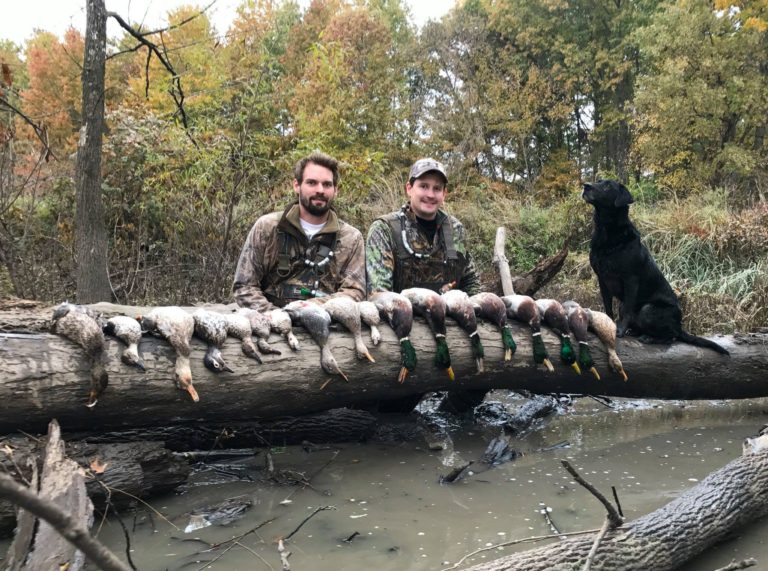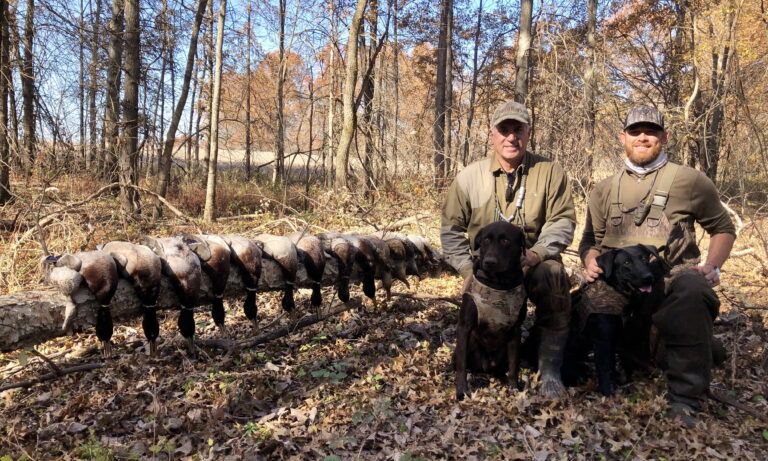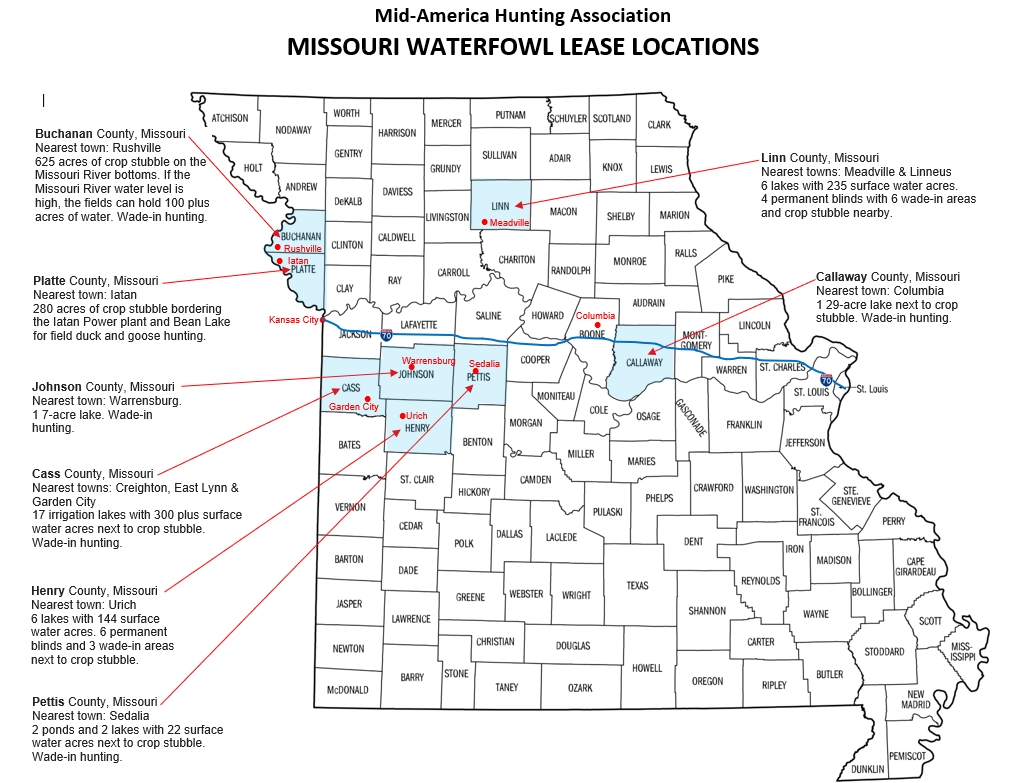
© 2024 All Right Reserved.
Mid-America Hunting Association
Mid-America Hunting Association is a private land, do it yourself hunter organization operating in Kansas and Missouri since 1965 offering Waterfowl Hunting. Missouri is our primary waterfowl state, but our Kansas land also has waterfowl opportunity.


Self-Guided Missouri Waterfowl Hunting on private leased land.
Season long access.
Permanent blinds, layout blind/wade-in areas, flooded crop stubble, food plots, oxbow/sloughs, open water, irrigation/watershed lakes and farm ponds.
Yearly dues include entire season, also Upland Bird, Spring and Fall Turkey and Fishing. Deer is optional.
Hunters don’t have to get up at 2am to wait in line or draw for a spot,
All hunting and scouting is controlled by our reservation system.
Membership is limited. No member will ever be denied a blind or wade-in area during the entire season,
Duck and Goose Hunting in both the North and Middle Zones.
Association membership is by application. Once accepted, members have access to an online map/reservation system with aerial photos and GPS coordinates. A detailed map of each blind and wade-in area is provided. All waterfowl hunting and scouting is controlled through an online or telephone reservation system.
No one will ever be denied the chance to reserve a blind, wade-in area or lake within the season.
Members have the option to choose from a variety of waterfowl spots each day.
Our Missouri Wetlands are in the North and Middle Zones. Our Middle Zone leases are less than an hour drive from Kansas City.
856 total surface water acres in Missouri and Kansas spread across 11 counties.
4 Missouri Managed Wetlands on 365 surface water acres with 11 blinds and 9 wade-in areas.
This does not cover the 100’s of farm ponds scattered across both states or the 10’s of 1000’s of acres of crop stubble available for field duck and goose hunting.
162 total waterfowl spots in Missouri and Kansas.
93 total Association waterfowl hunters during the 2022-23 MAHA waterfowl season.
Below is a pressure report for the past season which includes early teal, regular duck, late goose and the Spring Light Goose Conservation Order. Note: Members can hunt multiple states for multiple seasons, so those members will be counted numerous times.

We provide private dry or wetlands online map/reservation access and a local lodging listing. Waterfowl hunters provide the rest.
© 2024 All Right Reserved.
Mid-America Hunting Association
© 2024 All Rights Reserved
Mid-America Hunting Association